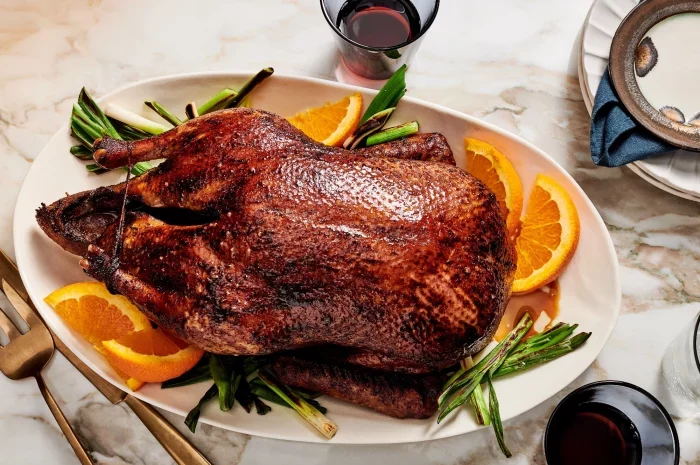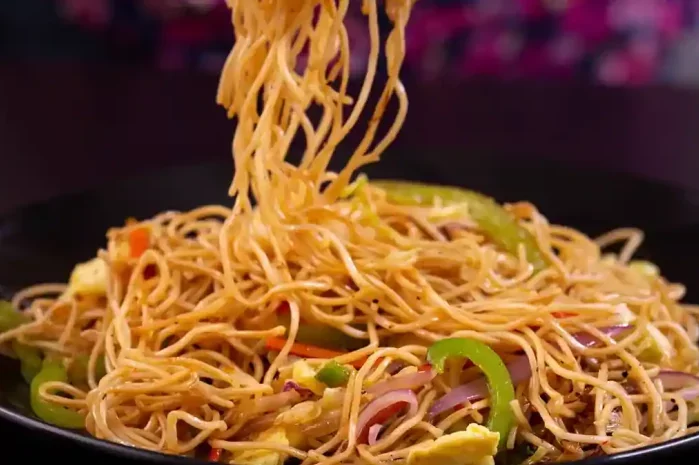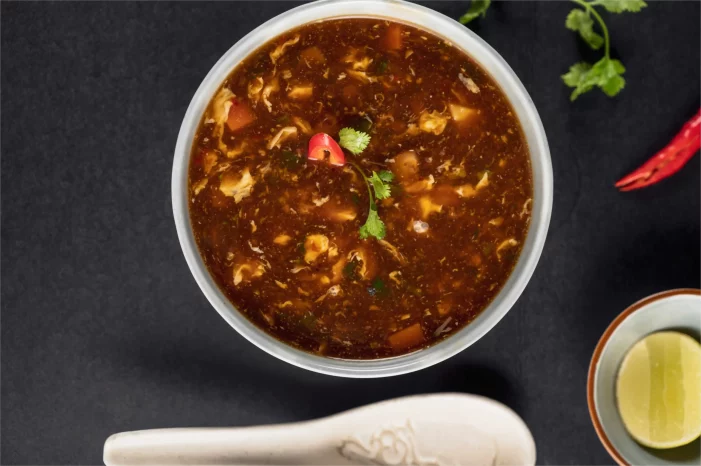Chinese roast duck, known as “Peking duck” in its traditional form, is a revered dish that holds a special place in Chinese culinary culture. Renowned for its crispy skin, succulent meat, and rich flavor, this iconic dish has been enjoyed for centuries and has gained popularity worldwide.
In this article, we’ll delve deeper into the cultural significance of Chinese roast duck, explore its historical roots, and provide a comprehensive guide to preparing it at home, allowing you to savor the authentic flavors of this classic dish in the comfort of your kitchen.
Cultural Significance of Chinese Roast Duck
Chinese roast duck is deeply ingrained in Chinese culinary tradition and is often associated with grand feasts, celebrations, and special occasions. Its origins can be traced back to the imperial kitchens of the Ming Dynasty, where it was a favorite dish among the nobility and aristocracy.
Initially reserved for the elite, Chinese roast duck eventually became more accessible to the general population, evolving into a beloved street food and restaurant staple enjoyed by people from all walks of life.
Historical Roots of Chinese Roast Duck
The history of Chinese roast duck dates back over 600 years to the Ming Dynasty, where it was first documented as a royal delicacy.
Legend has it that the dish was introduced to the imperial court by a scholar named Yi Bingshou, who served as a government official during the reign of Emperor Zhu Yuanzhang. Inspired by the techniques used to roast wild game, Yi Bingshou adapted the method to roast duck, creating a dish fit for royalty.
Over time, Chinese roast duck gained popularity beyond the confines of the imperial palace and became a symbol of culinary excellence throughout China. Its reputation spread far and wide, and by the time of the Qing Dynasty, it had become synonymous with the city of Beijing, earning the moniker “Peking duck” in honor of the capital.
The Art of Roasting Duck
Roasting duck is a culinary art form that requires precision, skill, and attention to detail.
The process begins with selecting a high-quality duck, preferably one with plump breast meat and a generous layer of fat beneath the skin. The duck is then meticulously seasoned with a blend of traditional Chinese spices and aromatics, such as star anise, cinnamon, ginger, and scallions, which infuse the meat with depth of flavor and aromatic richness.
Preparing the Duck
1. Cleaning and Drying:
Start by meticulously cleaning the duck, removing any excess fat and innards. Pat the duck dry with paper towels to eliminate moisture, a crucial step for achieving crispy skin during the roasting process.
2. Seasoning:
Rub the duck inside and out with a mixture of salt, five-spice powder, and any additional spices or herbs of your choice. Allow the duck to marinate for at least 2 hours or preferably overnight in the refrigerator, allowing the flavors to meld and penetrate the meat thoroughly.
3. Air Drying:
To achieve optimal crispiness, allow the seasoned duck to air dry in the refrigerator for several hours or overnight. This process helps remove excess moisture from the skin and promotes superior browning and texture during roasting.
Roasting the Duck
1. High Heat:
Preheat the oven to a high temperature, typically around 375°F (190°C) to 400°F (200°C). Place the duck on a roasting rack in a baking pan, breast side up, ensuring even airflow and heat distribution.
2. Slow Roasting:
Roast the duck in the preheated oven for 60-90 minutes, depending on its size, until the skin is golden brown and crispy, and the internal temperature reaches 165°F (75°C). Baste the duck periodically with its rendered fat to keep it moist and flavorful throughout the cooking process.
3. Resting Period:
Allow the roasted duck to rest for 10-15 minutes before carving to allow the juices to redistribute and ensure tender, succulent meat that is bursting with flavor.
Serving Suggestions
1. Traditional Accompaniments:
Serve the Chinese roast duck with steamed pancakes, hoisin sauce, thinly sliced scallions, and cucumber sticks for a traditional Peking duck experience that is both indulgent and satisfying.
2. Creative Variations:
Get creative with your serving options by incorporating the roasted duck into salads, wraps, stir-fries, or noodle dishes for a unique twist on this classic dish that showcases its versatility and adaptability.
3. Side Dishes:
Pair the Chinese roast duck with a variety of side dishes, such as steamed rice, stir-fried vegetables, or pickled daikon radish, to create a well-rounded and balanced meal that satisfies the palate and nourishes the body.
Conclusion
Chinese roast duck is more than just a delicious meal – it’s a culinary masterpiece that embodies centuries of tradition, craftsmanship, and cultural heritage.
By following this comprehensive guide to preparing Chinese roast duck at home, you can embark on a culinary adventure that celebrates the rich flavors and timeless elegance of this iconic dish.
Whether enjoyed as part of a festive feast or a cozy family dinner, Chinese roast duck is sure to delight your taste buds and leave a lasting impression on all who partake in its savory goodness.



























